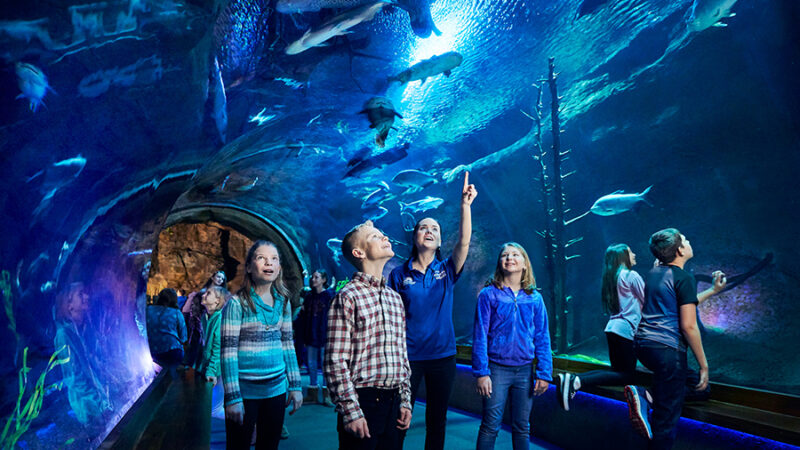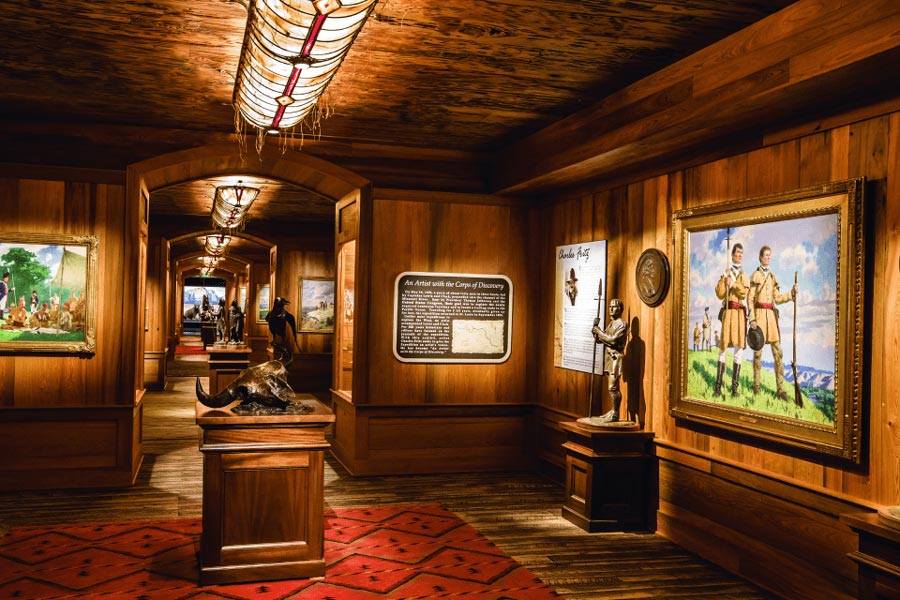I Wonder… Why Can’t I Use Flash in an Aquarium or Museum?

Published January 6, 2025
Capturing photos of your favorite animals and exhibits is one of the best parts of exploring the aquarium and museums across all the Johnny Morris Conservation Attraction properties. You can preserve all your special memories with these photos, share the beauty of wildlife, and foster an appreciation for conserving what came before us with a simple photo on your phone or digital camera. However, if proper etiquette is not followed, a photo can cause more harm than you may realize.
Flash photography is proven as a harmful practice to live animals, properly preserved artwork, and artifacts. An intense burst of light can startle and stress the animals, disrupting their natural behavior. It can also cause discomfort, temporary blindness, and in some extreme cases, long-term harm to their overall health. The Wildlife Galleries at Wonders of Wildlife and Ancient Ozarks Natural History Museum are home to hundreds of paintings from throughout history. Flash photography can lead to fading and deterioration of the delicate materials these incredible pieces are made of.

Not using flash can also be a kind gesture to the other visitors around you. The bright and sudden flash from a camera can be disruptive and distracting to others who are trying to enjoy the exhibits peacefully. It can disrupt their viewing experience, hinder their ability to read informational placards or signs, and diminish the overall ambiance of the museums or aquarium. It can also pose safety risks, especially in crowded areas. The intense light can temporarily cause disorientation or impair the vision of individuals, leading to potential accidents.
Before entering the aquarium or museums on your next visit, be sure to check your phone or camera. Ensure your flash is off each time you take a photo or video. By practicing responsible photography, we can ensure the well-being of the animals, preserve historic artwork, and create a welcoming experience for all guests.
News & Updates
Read the latest news & updates about Wonders of Wildlife.
Recent News & Stories
- Celebrating Service: Veterans Day at Wonders of Wildlife
- Conservation Starts with a Gift: Explore our Holiday Offers
- Commemorating the Life of Capella
- Celebrating NHF Day 2025 at WOW
- National Zookeeper Week at WOW
- How to Celebrate Shark Week
- I Wonder…Why are Animal Ambassadors so Important to Conservation Efforts?
- I Wonder…What Makes Penguin Cove so Cool?
